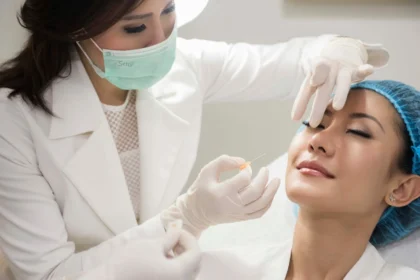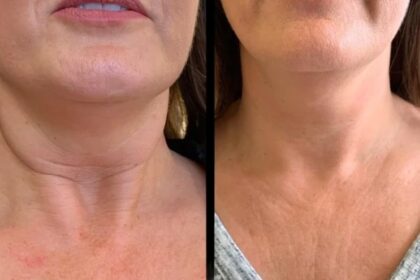Nail fungus is a persistent and sometimes difficult-to-treat condition that affects the toenails more often than fingernails. It is caused by various types of fungi, including dermatophytes, yeasts, and molds. The infection typically begins as a white or yellow spot under the tip of the nail and can progress, leading to thickened, brittle, and discolored nails. If you’re looking to learn more about nail fungus treatment, this guide provides comprehensive information to help you make informed decisions.
Understanding Nail Fungus and How It Spreads
Fungal nail infections develop in warm, moist environments, which makes feet especially vulnerable. Public swimming pools, locker rooms, and communal showers are hotspots for fungal exposure. Individuals with compromised immune systems, diabetes, or circulatory issues are at higher risk of developing infections. The fungus enters through small cuts or breaks in the skin or nail and begins to thrive underneath the nail plate, which provides a protective environment for growth.
Recognizing the Signs of Nail Fungus
Early identification of nail fungus is critical for successful treatment. The most common signs include yellowing or white discoloration of the nail, a thickened or distorted nail shape, brittle or crumbly nail texture, and sometimes a foul odor. In advanced cases, the nail may separate from the nail bed. These symptoms may be subtle at first and often go unnoticed, but ignoring them can lead to more severe complications that are harder to treat and may require prolonged therapy.
Conventional Approaches to Nail Fungus Treatment
The first step in nail fungus treatment typically involves confirming the diagnosis through a physical examination and sometimes lab tests. Topical antifungal medications such as creams, gels, and medicated nail lacquers are commonly prescribed for mild to moderate infections. These need to be applied daily and may take several months to show noticeable results. For more severe or widespread infections, oral antifungal drugs like terbinafine and itraconazole may be prescribed. These medications work systemically to clear the fungus but can cause side effects such as liver toxicity, making regular blood tests a requirement during treatment.
Exploring Newer and More Advanced Therapies
Modern advances in technology have introduced new options for nail fungus treatment, particularly laser therapy. This treatment involves the use of focused laser light that penetrates the nail to kill the fungal organisms at their source without damaging surrounding tissue. Laser therapy is increasingly preferred due to its non-invasive nature and lack of systemic side effects. Although it may not work for everyone and often requires multiple sessions, many patients report visible improvement after just a few treatments. Additionally, laser therapy doesn’t require daily application like topical solutions or ongoing blood work like oral drugs.
The Role of Daily Habits and Prevention Strategies
Even the most effective nail fungus treatment can fail without proper care and hygiene. Daily foot washing, thoroughly drying feet (especially between the toes), and wearing clean, breathable socks can help reduce the risk of reinfection. Using antifungal foot powder, changing shoes regularly, and avoiding barefoot walking in public places are also essential preventive strategies. Nail grooming tools should be disinfected after every use, and nail salons should follow strict hygiene protocols. Keeping your nails trimmed and avoiding artificial nails or nail polish during treatment can also support faster recovery.
FAQs
What is the fastest way to get rid of nail fungus?
While there is no instant solution, combining oral medication with laser therapy is often the most effective and rapid nail fungus treatment. Consistency in following medical advice and hygiene practices can significantly speed up recovery.
How effective is laser therapy?
Laser therapy has shown high efficacy rates in clinical settings, especially when the infection is caught early. At laser medical clinic, patients often experience marked improvement after a few sessions, with many achieving full clearance over time.
Is it possible for nail fungus to return after treatment?
Yes, nail fungus can recur even after successful treatment. To prevent this, it’s essential to follow preventive care, such as keeping feet clean and dry, avoiding shared footwear, and disinfecting surfaces that may harbor fungus.
Are over-the-counter treatments enough?
OTC antifungal creams and solutions can help in very mild cases but are generally less effective than prescription medications or laser treatments. They are best used as a supplementary option or early intervention measure.
When should I see a doctor?
If you notice persistent discoloration, thickening, or discomfort in your nails that doesn’t improve with basic care, you should consult a healthcare provider. Early diagnosis and treatment can prevent further complications and improve outcomes.
Conclusion
Dealing with nail fungus can be frustrating and sometimes embarrassing, but with the right nail fungus treatment, recovery is possible. Whether you choose traditional methods such as topical or oral antifungals, or opt for newer technologies like laser therapy, staying committed to your treatment plan is essential. Preventing reinfection through good hygiene and lifestyle adjustments is equally important. Acting promptly at the first sign of infection increases the chance of full recovery and helps you maintain healthy, clear nails for the long term.





